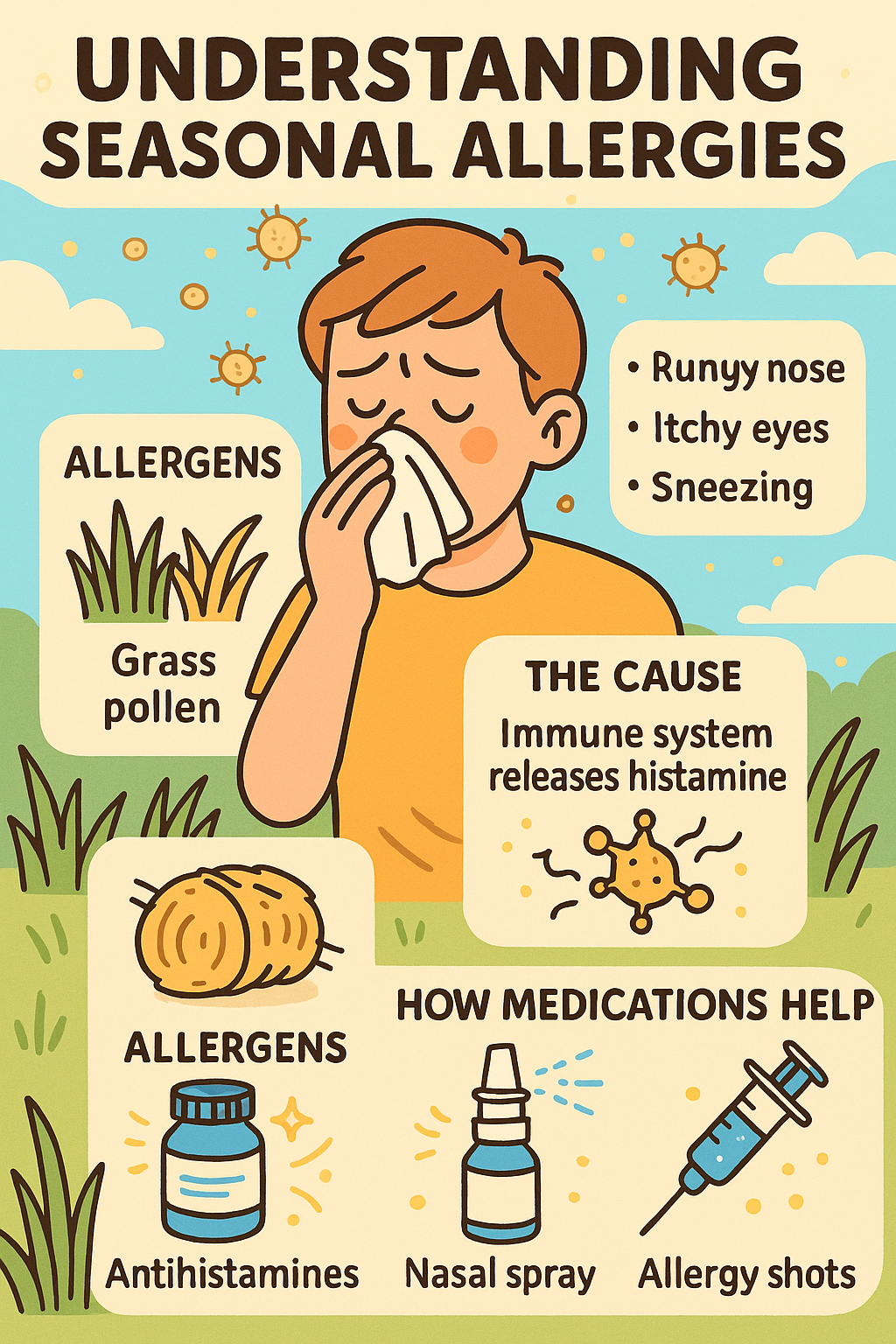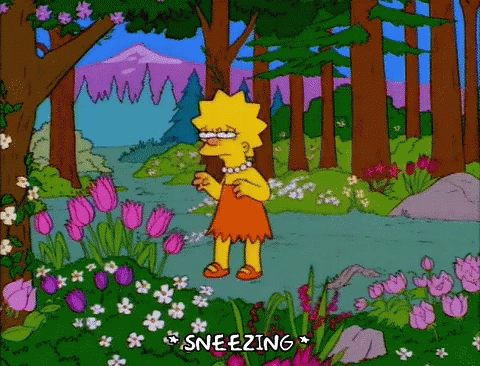🌾 Understanding Seasonal Allergies: Grass, Hay & Summertime Sneezes

The Varrock Street Journal | Natural & Health Sciences Edition
Have you ever wondered why you start sneezing as soon as the lawnmowers fire up?
Or maybe you’ve noticed itchy eyes and a runny nose just as summer kicks into full swing. If so, you're not alone. Millions of people experience seasonal allergies—especially to grass pollen and hay—when warm weather hits. Today, we’re diving into the science behind why your immune system seems to go to war with your backyard and how modern medicine helps you fight back.

What Causes Grass & Hay Allergies?
Seasonal allergies (also known as hay fever or allergic rhinitis) are triggered when your immune system overreacts to harmless substances like pollen released by trees, grasses, and weeds. In late spring and summer, grasses like Timothy, Kentucky bluegrass, Bermuda, and ryegrass release large amounts of pollen into the air.
Hay—typically dried grass used in animal feed—isn't always allergenic on its own, but it often contains pollen, dust, and mold spores that worsen symptoms.
When these allergens enter your nose, mouth, or eyes, your immune system mistakenly identifies them as dangerous invaders and releases histamines, a chemical that causes inflammation, sneezing, congestion, itchy eyes, and runny nose.
Why Now? The Timing of the Allergy Season
- Spring (April–June): Tree pollens dominate.
- Summer (May–August): Grass pollens peak.
- Late Summer–Fall (July–October): Ragweed and weed pollens take over.
Because grasses thrive and bloom in the early to mid-summer, this is when grass pollen counts soar—especially on warm, dry, and windy days. Rain tends to temporarily clear the air, while sunny days often bring a pollen storm.
Here is a fun video helping explain this topic even more!
How Do Allergy Medications Work?
There are several medications designed to stop the allergic cascade or reduce your symptoms:
1. Antihistamines (like loratadine, cetirizine, or diphenhydramine):
These block histamine receptors so your body doesn’t respond as intensely. They help with sneezing, runny nose, and itching.
2. Nasal corticosteroids (like fluticasone or mometasone):
Reduce inflammation in the nasal passages and are considered first-line treatment for moderate to severe allergies.
3. Decongestants (like pseudoephedrine or oxymetazoline):
Shrink swollen nasal tissues, making it easier to breathe. But they should be used sparingly to avoid rebound congestion.
4. Allergy shots (immunotherapy):
This treatment helps your body slowly get used to allergens over time. Think of it as training your immune system to chill out.
Why This Matters
While seasonal allergies aren’t life-threatening, they can significantly affect quality of life, leading to fatigue, reduced concentration, poor sleep, and even asthma exacerbations. By understanding what triggers your symptoms and how treatments work, you can take proactive steps to minimize exposure and manage symptoms effectively.
Spotlight on the Future
Scientists are exploring new biologic therapies and customized immunotherapy that target the immune system more precisely. There's also interest in pollen forecasting apps and wearable air quality monitors that can alert you when it's best to stay indoors.
Did You Know?
Reflection Questions:
- Have you noticed your allergies are worse during certain times of day or year?
- What treatments have helped you the most during allergy season?
- How might climate change affect pollen seasons in the future?
📌 Follow us for more science & health insights:
📸 Instagram @thevarrockstreetjournal
📽️ TikTok @varrock.street.jo
🧠 Stay curious, stay well,
— The Varrock Street Journal Team
